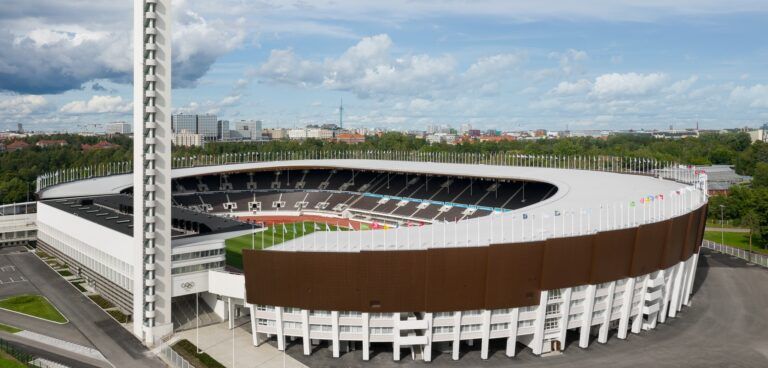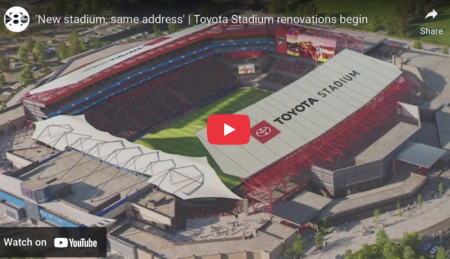First inaugurated in 1938, the Helsinki Olympic Stadium has reopened after an extensive modernization and rebuild. While the four-year renovation project was carried out with great respect towards the stadium’s original modernist architecture, new functionalities have been added and comfort and safety have been increased to match the demands of the future.
In the early noughties, the future looked uncertain for the Helsinki Olympic Stadium. The arena was in poor condition and no longer met the standards for an events venue. Although the cost estimate showed a figure that would buy you a new arena, it was decided to appreciate the old and invest in rebuilding and refurbishing the Olympic Stadium. Now, the Stadium is a place where the past and the future meet, and old and new elements blend seamlessly.
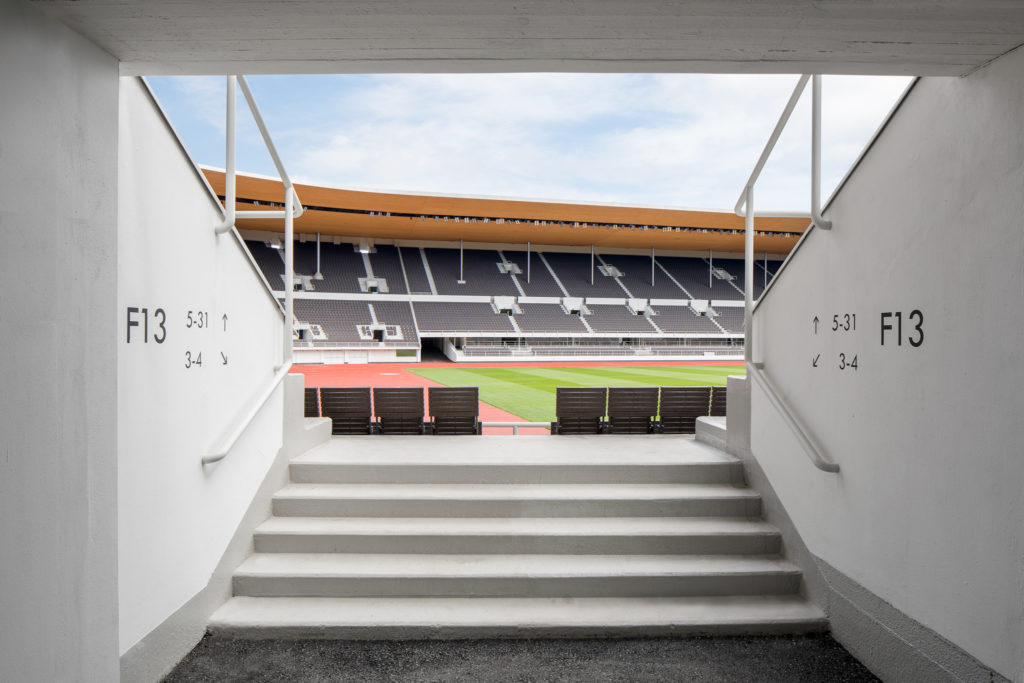
While the Stadium has been renovated with great respect towards the original architecture, it has also undergone great changes to meet the 21st century standards for a multipurpose arena. The Stadium is now more comfortable, more accessible, and more functional while remaining instantly recognizable. The entire Stadium premises as well as the stands, pitch and tracks have been modernized. Moreover, another stadium has been built underground: 20,000 square meters of new underground space doubles the amount of warm indoor space at the Stadium. Smart and versatile sports facilities, a tunnel following the tracks above, a logistics area and a multipurpose hall constitute a completely new part of the Olympic Stadium.
The Stadium’s external architecture of 2020 combines the restored 1930s concrete architecture and the renovated parts of the 1950s with a new North stadium square, where food and beverage kiosks in concrete serve audiences. The various elements make up a familiar and recognizable monument in human dimensions. The materials in old and new parts of the whole are timeless and durable: white concrete, brick, wood, and glass.
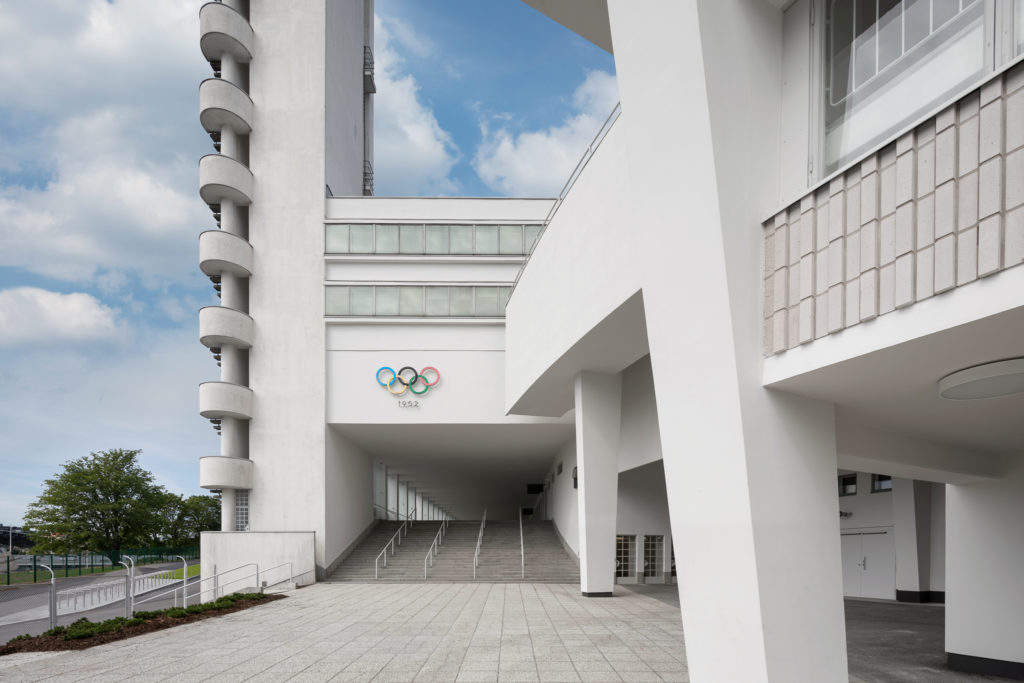
The renewed wood cover of the façades, made of Finnish spruce and pine timber, conceals new rain shelter structures above the stands. The use of wood harks back to the 1950s, when wood was used to extend the concrete-structured Stadium to reach its current appearance. Wood provides the audience stands with a tactile material and texture with minute scale. To ensure audience safety, the cover of the rain shelter is in fireproofed wood. The composition of the 36,300 new wood composite seats, made nearby in Salo, Southern Finland, is also fire-resistant. The new seats are more comfortable even for taller eventgoers. In concerts, the Stadium can host up to 50,000 guests.
The plastered façades, their visible concrete structures and the brickwork in the curves have been restored to their original look. The new entrances to the stands, with the concrete stairs poured in place, have been adapted to meet the rhythm of the concrete structure curves and brickwork façades. Thanks to new emergency exits, the Stadium can now be emptied in just 8 minutes.
The details in the façade steel parts have been restored and the steel metal flashing has been made according to the original drawings. The original frames and sashes of the steel and wooden windows have been restored while the glass sheets are new and more energy efficient.
The architectural design is by the consortium K2S and NRT in cooperation with Swedish architecture collective White Arkitekten and Wessel de Jonge from the Netherlands.
“The Olympic Stadium was built for action, and it has a wide range of different user groups. The Stadium offers a frame for all this action. As architects, we had to listen to representatives of all the different user groups, learn about their needs, and fit them together in a way that allows the Stadium to serve all users with as little changes as possible – all the while maintaining an architecturally harmonious, experiential stadium”, explains architect Kimmo Lintula from architecture office K2S.
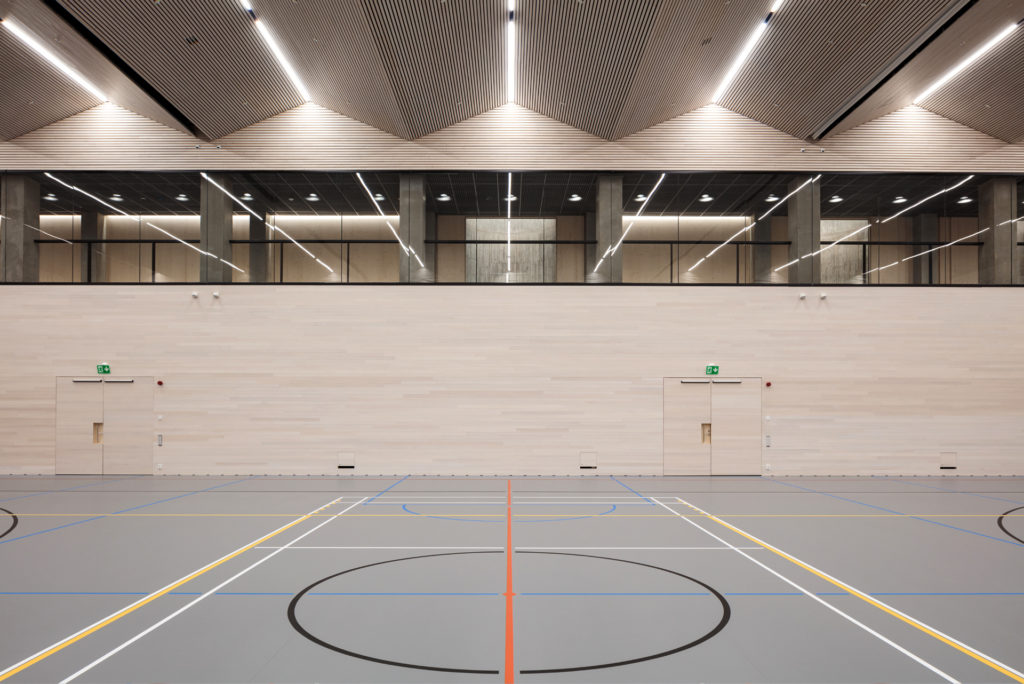
The facilities in the 1930s part of the Stadium now serve as multipurpose space for various events, and the functional clarity of interior spaces has been restored. Many improvements have been made to maximize audience comfort and accessibility: For example, the number of restrooms has been grown from 248 to 600, and the number of sales stands is now manifold. Left outside the scope of the renovation, the Stadium tower offers fantastic views over the city from 72 meters above ground.
In the future, the Olympic Stadium is expected to attract about one million visitors every year.
“The Olympic Stadium welcomes a new era with open arms. Sports and music fans alike from all over the world will meet at events held here, and the facilities will also draw locals and visitors on a daily basis. The renewed Olympic Stadium will be grander than ever, a venue for unforgettable moments and powerful emotions,” enthuses Marju Paju, Marketing and Communication Director for the Stadium Foundation.


